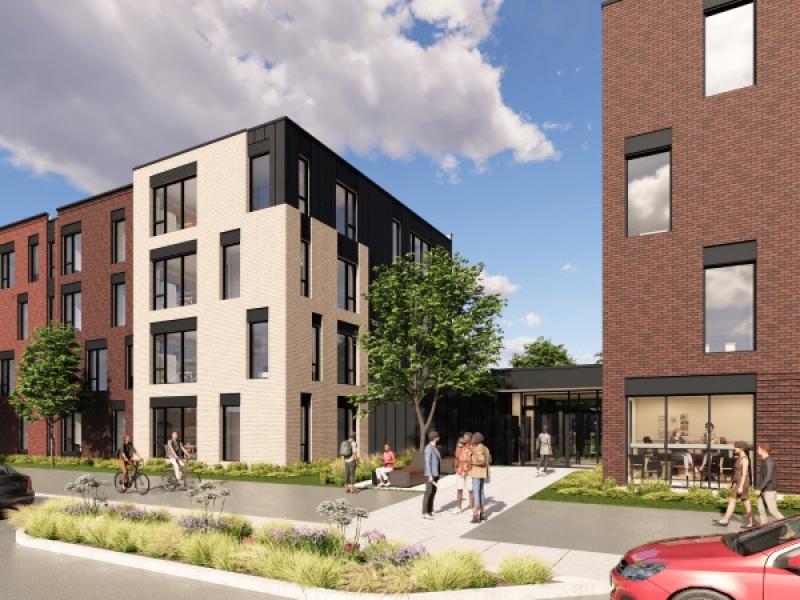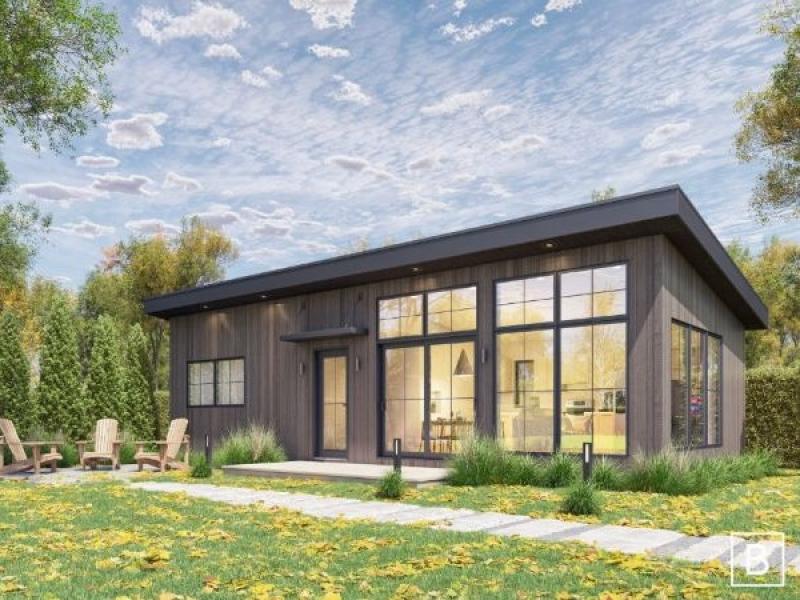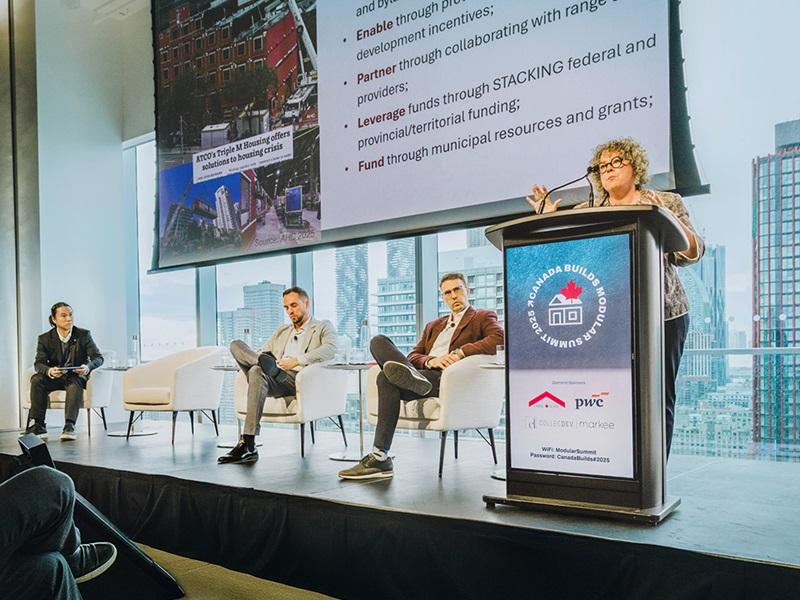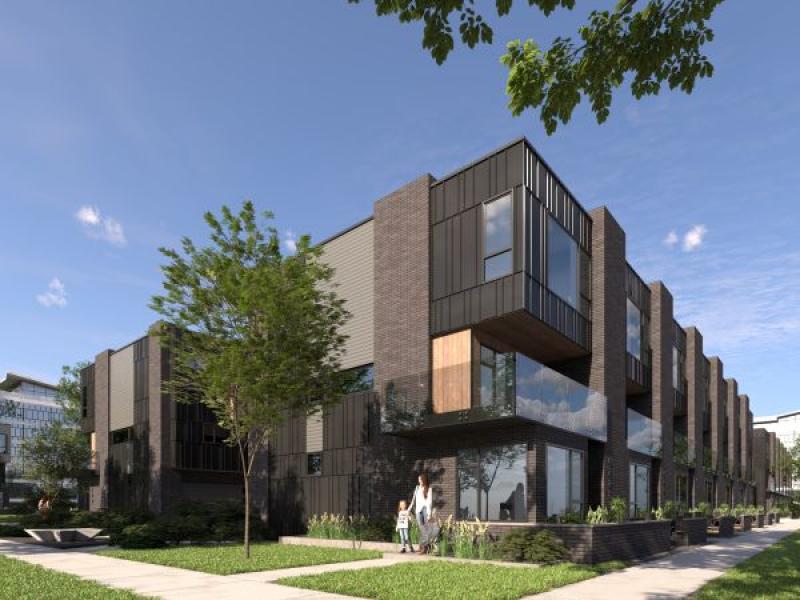
Bonneville Homes is experiencing an increase in demand for its modular products as the Canadian housing market cries out for homes that can be built faster and at lower costs.
The family-owned firm, with its head office in Beloeil, Que. (on the south shore of Montreal), has been manufacturing prefabricated housing components for decades. Now led by the fourth generation of the Bonneville family, it has delivered over 45,000 homes to date, mostly in Quebec, though it also has a presence in Ontario and New Brunswick.
The market is “ready for modular construction because the cost of construction keeps going up, labour is hard to find,” Martin Bisson, vice-president of business development and government affairs, said in an interview with RENX Homes.
With projects ranging from large custom homes to multi-unit affordable housing projects, the company manufactures a variety of housing types at its facilities in Beloeil and Sainte-Anne-de-la-Rochelle.
The benefits of modular construction over traditional homebuilding are well documented – cheaper costs, shorter construction timelines, less waste – Margaret Longhurst, a sales director at Bonneville Homes, said. But the method has yet to catch on in a big way in Canada outside Quebec.
The perception gap is something the company is trying to correct.
Bonneville Homes’ projects
Single-family housing makes up most of Bonneville Homes’ projects, Longhurst said. With a catalogue of dozens of models, sizes vary from the one-bedroom, 570-square-foot Garden Loft in the Micro-Loft Series to bungalows, two-storey homes, and its signature builds like the five-bedroom, 8,500-square-foot La Haut Perchee.
It also has a portfolio of multi-unit housing. Bonneville Homes is currently partnering with Quebec-based student housing non-profit UTILE on a 155-unit project designed for students of the University of Quebec at Rimouski.
In Saguenay, Que. the company was supported by over $8 million in government funding to assemble Les Îlots du Royaume, a project of 24 affordable housing units. Assembly took three days – from Oct. 30, 2024 to Nov. 1 – and move-in is expected to take place in May.

News of the rapid construction timeline, approximately 13 months, has led to calls from other developers hoping to create projects that can be built quickly, Bisson said.
“There is a strong demand” for prefabricated multiresidential buildings “with the way that the built industry is going with the lack of housing,” Longhurst said. In Ontario, Longhurst said Bonneville Homes is receiving more inquiries from the Toronto area for multiresidential housing, particularly four-, six- and 12-unit buildings.
Falling interest rates have also raised demand for Bonneville Homes’ single-family products, Longhurst observed. “We’ve definitely seen clients looking for faster ways, less expensive ways to start home ownership.”
Bonneville Homes has shifted 75 per cent of its production to multiresidential non-market housing to “respond to the housing crisis,” Bisson said. Company research found student and social housing are strong starting points to get modular multiresidential projects built quickly because of the consistency in their designs.
Does modular building bring down costs?
Bonneville Homes’ industry peers include Ottawa-based Caivan Homes, Great Gulf Group of Companies and Assembly Corp. in the Toronto area.
The high cost of housing in Canada’s largest cities has sparked searches for innovations to bring down prices. Modular housing is one path being explored, with UTILE's efforts in the sector reaching the final of the Canadian government’s Housing Supply Challenge seeking ways to deliver more housing, faster.
A report by CSA Group says modular construction can be completed 25 to 50 per cent faster than traditional construction and almost half of general contractors using the technique reported cost savings of at least 10 per cent. Assembly Corp. said it slashed on-site material waste by 80 per cent and halved on-site labour, demonstrating its efficiency.
Potential savings depend on the project and its location. For example, UTILE COO Gabriel Fournier Filion told RENX Homes prefab construction did not result in cost savings at the Rimouski development. On the other hand, Longhurst said she has seen costs “significantly” cut at some projects in the Muskoka market.
Bisson took issue with Fournier Filion’s assessment, saying he compared the cost of Bonneville Homes’ work in Rimouski to the lowest prices elsewhere in Quebec. As Rimouski is a small city, there was a limited number of general contractors and trades available, which Bisson said also raised costs.
By contrast, Bisson pointed to two Bonneville Homes projects in Gatineau where he said costs are 15 per cent cheaper than local market averages.
Educating the Canadian market on prefabrication
Despite the potential benefits, an analysis by IBISWorld found only one per cent of Canadians live in modular or prefabricated housing.
Modular housing is “extremely popular” in Quebec, Longhurst said, but not as much in Ontario. She suspects there is a “disconnect between modular homebuilding with clients thinking modular homebuilding was mobile homes.” The idea often conjures up an image of cheap mobile home parks, she said.
A lack of education is the problem, Longhurst believes. Many clients did not understand a modular home can be fixed on any foundation, for example.
To address this, Bonneville Homes will focus its marketing in Ontario at trade shows to bring more awareness of modular homebuilding, Longhurst said.
Scaling-up modular construction will require increased demand from the industry to achieve savings of scale, make trades workers more familiar with the method, and make capital more accessible to finance and support new prefabrication facilities, Bisson said.










